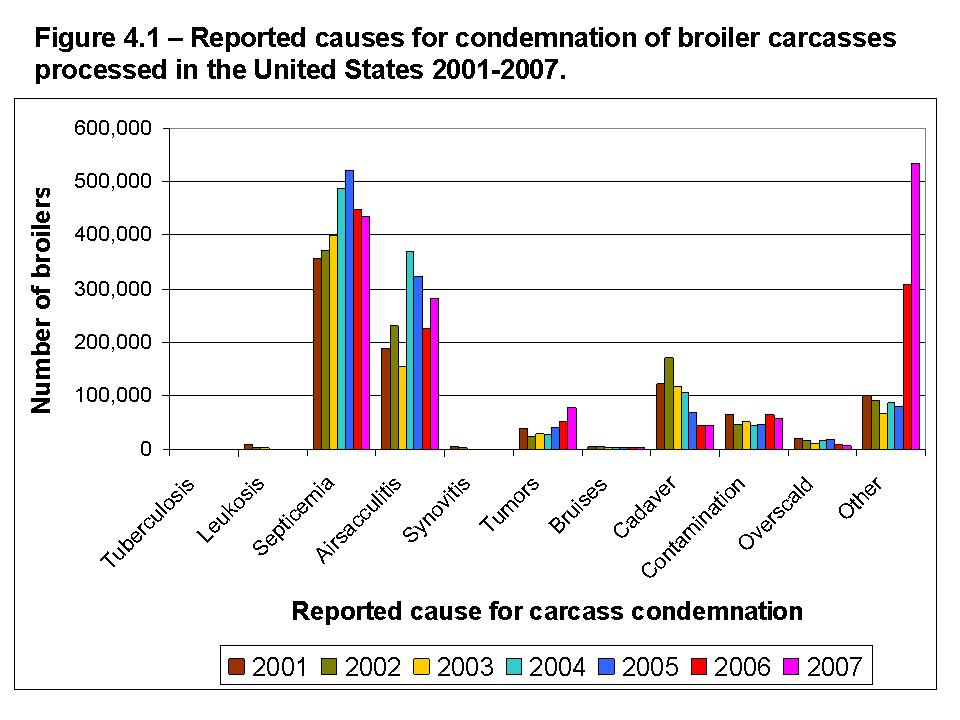Chapter 4 - Other Reasons for Condemnation
Chapter 4 - Other Reasons for Condemnation
There are several other subgroup categories for carcass condemnation.
Inflammatory process – In the U.S., ‘inflammatory process’ is the term used for cellulitis which is literally an inflammation of connective tissues. It typically occurs between skin and muscles and between muscles. It can be a major cause of condemnation in broiler chickens.
The condition is caused by infection of skin wounds (even minor ones) by particular strains of E. coli which can replicate in the tissues. The incidence of this condition in poultry slaughtered in North America has increased recently. A seasonal pattern has been observed, with a higher rate during the winter months.
Affected flocks tend to have poorer than average productivity and uniformity, but the affected birds are not readily detectable prior to slaughter. Toe scrapes at 15-25 days of age when feather cover is poor are the most likely predisposing factors.
Careful flock management with a view to reducing toe wounds has the greatest impact in controlling cellulitis. Routine monitoring of skin damage at about 25 days of age may be helpful in fostering good practices, though most of the broilers showing toe scrapes will not go on to develop cellulitis.
Carcasses are condemned when there are no viscera available to inspect. Disposition of no-viscera carcasses are determined by the veterinarian in charge and are based upon flock incidence of disease.
Xanthomatosis – Xanthomatosis is a rare condition of mature birds and is characterized by swollen wattles, thickened yellow areas of skin, and cutaneous swellings. In early stages, the swelling consists of a honey colored transudate; in later stages, this transudate becomes firm and fatty. Skin lesions contain 10-15 times more cholesterol than normal skin. Xanthomatosis is most likely attributed to contaminated feed fat with toxic aromatic hydrocarbons. The White Leghorn breed of chicken is the most commonly affected.
Parasites – If the infestation is generalized, the carcass is condemned.

